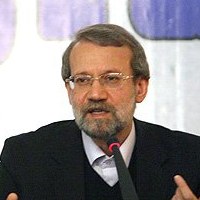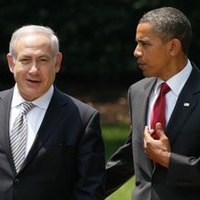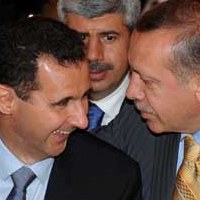![]()
Fri, Aug 3, 2012 | RubinReports | By Barry Rubin
Recently there has been a controversy when State Department spokespeople refused to say what they thought to be Israel’s capital. To understand this issue we need to understand that there are two different issues involved: that of 1947 and that of 1967.
I’m not going to discuss ancient history, religious factors, and the merits of varying claims here but rather will merely point out some simple facts of practical diplomacy.
The U.S. embassy, like others, is located in Tel Aviv. When diplomats need to meet with Israeli officials they pile into their vans and drive up to Jerusalem. There are other restrictions on just where these diplomats can go and under what conditions, to avoid any implication that they recognize Israel’s annexation of the Golan Heights or east Jerusalem.
Presidents have repeatedly promised to move the U.S. embassy to Jerusalem, but have never made the tiniest move toward doing so because that would make Muslims and Arabs angry. In his speeches to AIPAC, President Barack Obama has said — to thunderous applause — that Jerusalem was the capital of Israel and should remain undivided. But of course this was a totally cynical gesture.
One could — as Obama no doubt hoped his audience would do — interpret this as favoring Israeli sovereignty over all of Jerusalem. Under that interpretation, Obama was taking a position on the “final status” negotiations. What Obama probably really meant is that after a two-state solution is implemented, there should be no wall or closed border within Jerusalem. (That’s a nice idea, though how it would be implemented is a puzzler.)
There is a genuine diplomatic problem for the United States here, but there is also a reasonable way around it, if any future American president wanted to avail himself of that option.
In 1947, the UN partitioned the British mandate of Palestine into three parts: a Jewish state; an Arab state; and an international zone to control all of Jerusalem. The Jews accepted partition; the Arabs, including the Palestinian Arabs, rejected it. But both agreed that they were against Jerusalem being occupied and run by foreigners.
At the end of the 1948 war, Israel held west Jerusalem and made that city (or portion of the city, if you wish) its capital. Jordan captured the eastern part of the city and annexed it. King Hussein, however, dropped his claim to east Jerusalem and the West Bank — which only Britain and Pakistan had recognized — in 1988.
It is important to understand that the official position of the United States is still stuck in 1947. In other words, though this isn’t often mentioned and State Department spokespeople don’t even seem to understand that, American policy is that Jerusalem should be under international control.
This fact is confused by the 1967 issue. In 1967, after Jordan entered the war, Israel captured the eastern part of the city. While Israel then annexed that section and reunited the city, this was not accepted internationally. Almost all Israeli government buildings remain in the western, pre-1967 Israel part.
When Israel and the PLO signed the “Oslo agreement” in 1993, the future status of east Jerusalem was one of the issues left for a bilateral agreement. This is the main point that State Department spokespeople and U.S. officials cling to.
The only relevant mention of Jerusalem in the agreement occurs in Article Five, Paragraph 3:
It is understood that these negotiations shall cover remaining issues, including: Jerusalem, refugees, settlements, security arrangements, borders, relations and cooperation with other neighbors, and other issues of common interest.
The United States has repeatedly, though not always publicly, recognized that Israel makes a sharp distinction between Jerusalem and the West Bank (or, to use Israeli nomenclature, Judea and Samaria).
For example, in 2009 the Obama administration made a secret agreement with Israel to distinguish between construction on West Bank settlements and construction in east Jerusalem (or in other places, empty in 1967, where Israel has extended the city borders on the north, south, and west sides of the city). This was part of Israel’s agreement to freeze construction for a nine-month period to see if the Palestinian Authority wanted to negotiate. (It didn’t.) Vice President Joe Biden broke that agreement when he threw a tantrum about a low-level Israeli zoning board approving some future construction in the city. But that doesn’t change the fact that the U.S. government has accepted a distinction.
Now let me be very pragmatic here. As I noted above, it is true that the Oslo agreement said that the future status of Jerusalem will be decided in negotiations. Therefore, the United States has a legitimate rationale for not recognizing a united Jerusalem as the capital of Israel.
In the Camp David negotiations of 2000 and the Clinton plan later that year, in proposals approved by Israel’s government, Israel indicated its willingness to give up most of east Jerusalem as part of a full peace agreement. Since the Palestinian Authority rejected that offer, it is not binding.
Yet it is not true that any agreement precludes a simple alternative for U.S. policy that nobody has ever noticed or discussed: there is absolutely nothing to prevent the United States from accepting west Jerusalem, pre-1967 Jerusalem as capital of Israel while maintaining that the status of east Jerusalem is to be determined by future negotiations. The U.S. embassy could be moved to west Jerusalem, with the existing U.S. consulate there continuing to serve east Jerusalem and the West Bank, which means also dealing with the Palestinian Authority.
To be completely honest, such a move would provoke anti-Americanism in Arab and Muslim countries and it would be distorted by radicals, some of whom have been helped into power by the Obama administration. It is possible that U.S. embassies would be attacked. One should not gloss over that fact. Yet so many pretexts are found on a regular basis to do such things, a new decision on Jerusalem would be only one of many.
But keep in mind that the Palestinian Authority/Fatah position has been, for almost twenty years, that they are claiming all of east Jerusalem — everything captured by Israel in 1967 — but not west Jerusalem. Thus, moving the embassy to west Jerusalem would not conflict with Palestinian demands. It could even be coupled with a statement that the U.S. government believes that while the two sides must negotiate, it views with favor a Palestinian state with its capital in east Jerusalem.
At times, the White House and State Department spokespeople don’t seem to be aware of current U.S. policy on Jerusalem and the basis of it. There is no question that Jerusalem is and will remain the capital of Israel. The only real issue are its precise boundaries, to be determined by negotiations.
There is a reasonable alternative to a policy that is about 65 years out of date. Recognize Jerusalem — that is, the Jerusalem that the United States and everyone else already recognizes as part of Israel — as Israel’s capital. That’s an option America’s next president might seriously consider.



 RSS
RSS











Latest Comments
Hello Mike, Thank you for your positive feedback to the article. I felt there wasn’t too much critical analysis of ...
Thanks for this considered and well constructed article. A follow up article on the manner in which the editorial contro...
THE CLUELESSNESS OF CLAIMING THAT OBAMA'S MIDDLE EAST POLICIES WERE A FAILURE CANNOT BE FURTHER FROM THE TRUTH, WHAT THE...
As long as Obama is the president of the usa do not trust the us government......
Thank you for an good read....